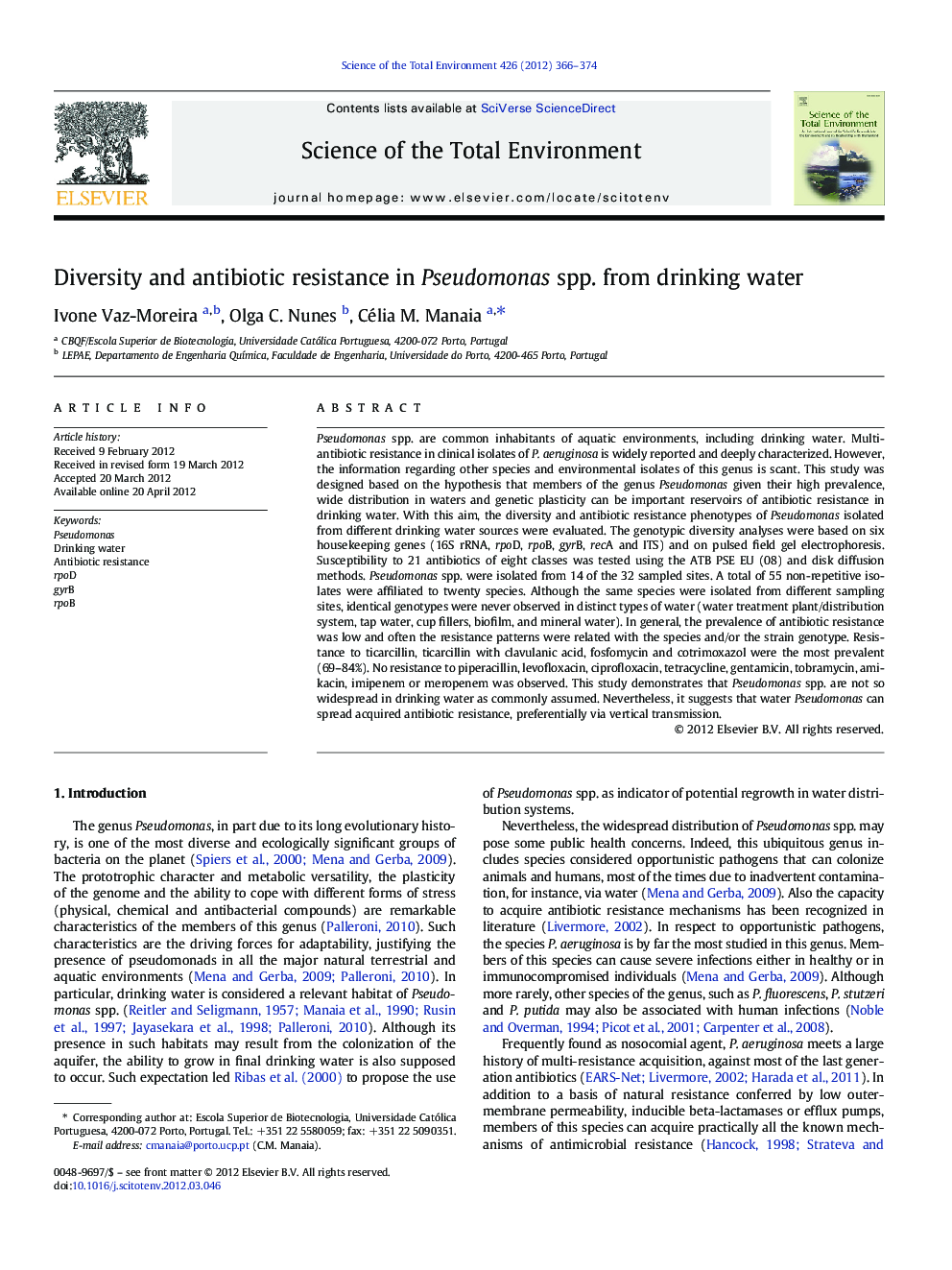| Article ID | Journal | Published Year | Pages | File Type |
|---|---|---|---|---|
| 4429491 | Science of The Total Environment | 2012 | 9 Pages |
Pseudomonas spp. are common inhabitants of aquatic environments, including drinking water. Multi-antibiotic resistance in clinical isolates of P. aeruginosa is widely reported and deeply characterized. However, the information regarding other species and environmental isolates of this genus is scant. This study was designed based on the hypothesis that members of the genus Pseudomonas given their high prevalence, wide distribution in waters and genetic plasticity can be important reservoirs of antibiotic resistance in drinking water. With this aim, the diversity and antibiotic resistance phenotypes of Pseudomonas isolated from different drinking water sources were evaluated. The genotypic diversity analyses were based on six housekeeping genes (16S rRNA, rpoD, rpoB, gyrB, recA and ITS) and on pulsed field gel electrophoresis. Susceptibility to 21 antibiotics of eight classes was tested using the ATB PSE EU (08) and disk diffusion methods. Pseudomonas spp. were isolated from 14 of the 32 sampled sites. A total of 55 non-repetitive isolates were affiliated to twenty species. Although the same species were isolated from different sampling sites, identical genotypes were never observed in distinct types of water (water treatment plant/distribution system, tap water, cup fillers, biofilm, and mineral water). In general, the prevalence of antibiotic resistance was low and often the resistance patterns were related with the species and/or the strain genotype. Resistance to ticarcillin, ticarcillin with clavulanic acid, fosfomycin and cotrimoxazol were the most prevalent (69–84%). No resistance to piperacillin, levofloxacin, ciprofloxacin, tetracycline, gentamicin, tobramycin, amikacin, imipenem or meropenem was observed. This study demonstrates that Pseudomonas spp. are not so widespread in drinking water as commonly assumed. Nevertheless, it suggests that water Pseudomonas can spread acquired antibiotic resistance, preferentially via vertical transmission.
Graphical abstractFigure optionsDownload full-size imageDownload as PowerPoint slideHighlights► The diversity of Pseudomonas in drinking water was analyzed, from source to tap. ► From more than half of the sampled sites it was not possible to culture Pseudomonas. ► Pseudomonas species varied according to the type of water. ► Pseudomonas detected at taps probably did not have origin in the water source. ► Antibiotic resistance in water Pseudomonas had low prevalence values and mainly species-related.
